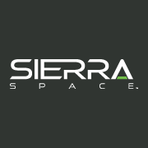The Race to Space: ULA and Sierra Space Push Boundaries
July 28, 2024, 5:45 am

Location: United States, Maryland, Greenbelt
Employees: 10001+
Founded date: 1958
Total raised: $25.7B

Location: United States, Colorado
Employees: 1001-5000
Founded date: 2021
Total raised: $1.69B
The cosmos is a vast playground. Companies like United Launch Alliance (ULA) and Sierra Space are racing to stake their claims. ULA is gearing up for a pivotal test flight of its Vulcan rocket. Sierra Space is testing inflatable habitats that could redefine living in space. Both are pushing the envelope, but the stakes are high.
ULA's Vulcan rocket is on the brink of its second test flight, set for mid-September. This is not just another launch; it’s a critical step toward operational status. The first flight was a success, but the second is where the rubber meets the road. If it goes off without a hitch, ULA could secure military contracts and regular missions. The Vulcan is not just a rocket; it’s a ticket to the future of space operations.
The Vulcan rocket carries a dummy payload this time, a strategic move. It’s a rehearsal for the real deal. The first flight carried a commercial lunar lander, a bold statement of intent. Now, ULA is focused on proving reliability. The military is watching closely. The U.S. Space Force has a laundry list of missions, and ULA’s Vulcan is at the forefront. Success could mean launching military payloads before the year ends.
The Vulcan rocket is a product of collaboration between Boeing and Lockheed Martin. ULA has been in the game for years, but the landscape is changing. Competition is fierce. SpaceX is a giant in the field, and ULA must adapt. The Vulcan is designed to be more efficient and cost-effective. It’s a response to the growing demand for space access.
Meanwhile, Sierra Space is carving its niche with inflatable habitats. Their LIFE (Large Integrated Flexible Environment) prototype recently surpassed NASA’s durability recommendations by 22%. This is a game-changer. Imagine a habitat that can expand from the size of a small house to a three-story building. That’s the vision.
Sierra Space’s LIFE modules are made from Vectran fiber, a material that gains strength when inflated. This is not just a clever design; it’s a revolutionary approach to space living. The goal is to create a space campus larger than the International Space Station (ISS). The LIFE 285 model is a testament to this ambition. It can withstand pressures that would make other structures buckle.
The testing process is rigorous. In June, the LIFE 285 endured pressures of 74 pounds per square inch before bursting. This resilience opens doors. It means these habitats can be deployed in various configurations, creating flexible living and working spaces in orbit. The future of space habitation is not rigid; it’s adaptable.
Sierra Space plans to develop a 500 cubic meter prototype by 2025. This is just the beginning. The company envisions a network of habitats that can support human life in space. The potential applications are vast, from research stations to tourist destinations.
Both ULA and Sierra Space are part of a larger narrative. The race to space is not just about exploration; it’s about establishing a presence. The military is keenly interested in these developments. Space is the new frontier, and securing a foothold is paramount.
ULA’s Vulcan rocket is a cornerstone of this strategy. It’s designed to meet the needs of both commercial and military clients. The upcoming test flight is crucial. If successful, it could lead to a flurry of contracts. The Space Force has ambitious goals, aiming to complete numerous missions by 2027. ULA is poised to play a significant role in this endeavor.
Sierra Space, on the other hand, is focused on the human aspect of space travel. Their inflatable habitats could change how we think about living in space. The idea of a modular, expandable habitat is appealing. It offers flexibility and scalability, essential for long-term missions.
The interplay between ULA and Sierra Space highlights the diverse approaches to space exploration. ULA is about launching payloads and military missions. Sierra Space is about creating environments for humans to thrive. Together, they represent the duality of space exploration: the technological and the human.
As we look to the stars, the excitement is palpable. The next few years will be pivotal. ULA’s Vulcan rocket could become a workhorse for military and commercial missions. Sierra Space’s habitats could redefine life beyond Earth.
The race is on. The stakes are high. The cosmos awaits. Each test flight, each prototype, brings us closer to a future where space is not just a destination but a home. The dreams of today are the realities of tomorrow. In this race, every launch counts. Every innovation matters. The universe is vast, but with determination and ingenuity, we are ready to explore its depths.
In the end, it’s about more than rockets and habitats. It’s about the human spirit. The desire to explore, to innovate, and to thrive. ULA and Sierra Space are leading the charge. The future is bright, and the stars are within reach.
ULA's Vulcan rocket is on the brink of its second test flight, set for mid-September. This is not just another launch; it’s a critical step toward operational status. The first flight was a success, but the second is where the rubber meets the road. If it goes off without a hitch, ULA could secure military contracts and regular missions. The Vulcan is not just a rocket; it’s a ticket to the future of space operations.
The Vulcan rocket carries a dummy payload this time, a strategic move. It’s a rehearsal for the real deal. The first flight carried a commercial lunar lander, a bold statement of intent. Now, ULA is focused on proving reliability. The military is watching closely. The U.S. Space Force has a laundry list of missions, and ULA’s Vulcan is at the forefront. Success could mean launching military payloads before the year ends.
The Vulcan rocket is a product of collaboration between Boeing and Lockheed Martin. ULA has been in the game for years, but the landscape is changing. Competition is fierce. SpaceX is a giant in the field, and ULA must adapt. The Vulcan is designed to be more efficient and cost-effective. It’s a response to the growing demand for space access.
Meanwhile, Sierra Space is carving its niche with inflatable habitats. Their LIFE (Large Integrated Flexible Environment) prototype recently surpassed NASA’s durability recommendations by 22%. This is a game-changer. Imagine a habitat that can expand from the size of a small house to a three-story building. That’s the vision.
Sierra Space’s LIFE modules are made from Vectran fiber, a material that gains strength when inflated. This is not just a clever design; it’s a revolutionary approach to space living. The goal is to create a space campus larger than the International Space Station (ISS). The LIFE 285 model is a testament to this ambition. It can withstand pressures that would make other structures buckle.
The testing process is rigorous. In June, the LIFE 285 endured pressures of 74 pounds per square inch before bursting. This resilience opens doors. It means these habitats can be deployed in various configurations, creating flexible living and working spaces in orbit. The future of space habitation is not rigid; it’s adaptable.
Sierra Space plans to develop a 500 cubic meter prototype by 2025. This is just the beginning. The company envisions a network of habitats that can support human life in space. The potential applications are vast, from research stations to tourist destinations.
Both ULA and Sierra Space are part of a larger narrative. The race to space is not just about exploration; it’s about establishing a presence. The military is keenly interested in these developments. Space is the new frontier, and securing a foothold is paramount.
ULA’s Vulcan rocket is a cornerstone of this strategy. It’s designed to meet the needs of both commercial and military clients. The upcoming test flight is crucial. If successful, it could lead to a flurry of contracts. The Space Force has ambitious goals, aiming to complete numerous missions by 2027. ULA is poised to play a significant role in this endeavor.
Sierra Space, on the other hand, is focused on the human aspect of space travel. Their inflatable habitats could change how we think about living in space. The idea of a modular, expandable habitat is appealing. It offers flexibility and scalability, essential for long-term missions.
The interplay between ULA and Sierra Space highlights the diverse approaches to space exploration. ULA is about launching payloads and military missions. Sierra Space is about creating environments for humans to thrive. Together, they represent the duality of space exploration: the technological and the human.
As we look to the stars, the excitement is palpable. The next few years will be pivotal. ULA’s Vulcan rocket could become a workhorse for military and commercial missions. Sierra Space’s habitats could redefine life beyond Earth.
The race is on. The stakes are high. The cosmos awaits. Each test flight, each prototype, brings us closer to a future where space is not just a destination but a home. The dreams of today are the realities of tomorrow. In this race, every launch counts. Every innovation matters. The universe is vast, but with determination and ingenuity, we are ready to explore its depths.
In the end, it’s about more than rockets and habitats. It’s about the human spirit. The desire to explore, to innovate, and to thrive. ULA and Sierra Space are leading the charge. The future is bright, and the stars are within reach.